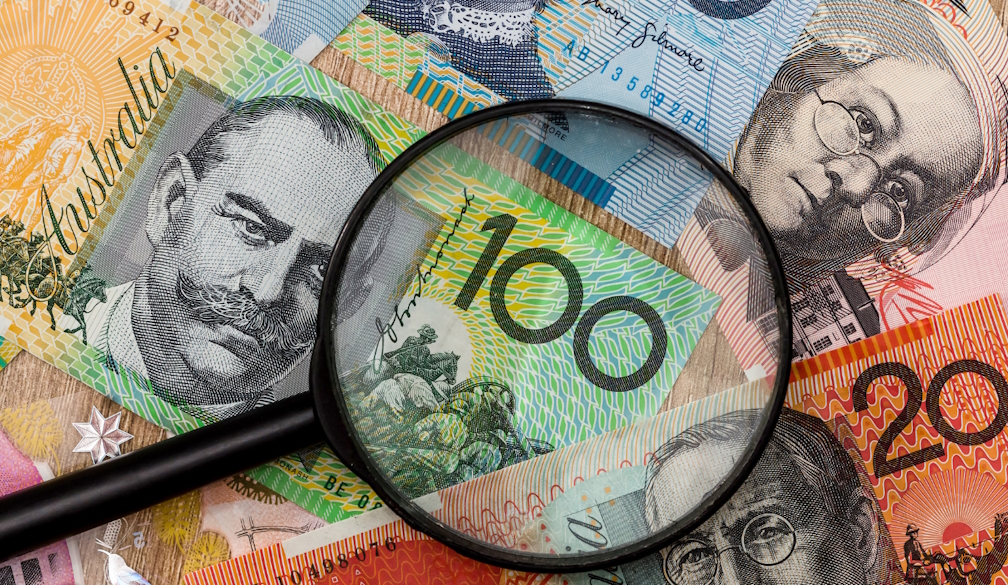Is the Australian sharemarket headed for a correction? Here’s one way to judge
- Written by Mark Crosby, Professor of Economics, Monash University

The Australian sharemarket has had a remarkably strong run since December 2023, when the S&P/ASX 200 index was around 7,000. In recent weeks the index topped 9,000 for the first time, a rise of about 16% on an annualised basis over this 21-month period.
This strong performance comes despite the economy and many companies facing difficult times. Recent earnings performance[1] of companies has been mixed, and doesn’t seem to warrant such strong stockmarket growth. This raises the question of whether the market is due for a fall.
On Wednesday, the market posted its biggest one-day decline[2] since April, losing 1.8%, for its fourth straight down day.
How to think about fair value
The best way to think about the “right” value for the stockmarket is to remember that when you are buying a share in a company, you are buying a share of their future dividends, which will in turn be related to the company’s earnings.
Economists and finance professionals use the “price-to-earnings ratio[3]” as a way of assessing whether a company’s shares are high or low. This “PE ratio” compares a company’s share price with its earnings per share, and it can be used for comparisons with history, with competitors in the market, or with the stockmarket as a whole.
Take the Commonwealth Bank for example, which is held by all the superannuation funds[4]. The bank has recently been trading at around A$170 a share[5], and its last 12 months’ earnings per share were about $6[6]. So the price-to-earnings ratio is about 28.3.
For the stockmarket as a whole (more than 2,300 companies), the current PE ratio is about 25[7], which is well above the average PE ratio historically of around 16 in Australia[8].
Both the Commonwealth Bank, and the market as a whole, are “expensive” compared with historical valuations using this measurement. So are they going to fall?
The important point to note is that price-to-earnings ratios are based on past earnings. When you buy a share, it is not past earnings but future earnings that will determine future dividends and the value of the company. High PE ratios tell us that investors in the sharemarket see a rosy future, with rising profits and dividends.
Interest rates are a big factor
Price-to-earnings ratios might also be high because interest rates are still low[9] by historical standards.
Low interest rates support businesses and future earnings. Low rates also lead investors to switch from low-return bonds and term deposits to higher yielding shares. This interest rate effect has been very strong in recent years, and explains part of the current market strength.
Another factor leading to strong sharemarket growth has been the surge in prices of artificial intelligence (AI) and related tech stocks. As with the internet boom in the late 1990s, there are hopes[10] we are headed for a “new economy,” and many companies with good exposure to AI and technology might see earnings surge in future years.
Of course, the internet boom of the 1990s ended with the dotcom crash of 2000, when the high-tech Nasdaq index of stocks[11] in the United States lost more than 60% of its market capitalisation in two years, to a low of around 1,300.
Yet the Nasdaq index[12] today stands at more than 21,000. Many internet companies were wiped out during 2000 to 2002 – but those that survived are some of today’s titans.
For example, Amazon’s total market value[13] has surged from a low of US$7 billion in 2002 to US$2.4 trillion now, with a PE ratio of 35.
This AI-related boom is a key consideration of many investors. Sure, some companies might not make it – but if you can hold on to the right ones you could make a very tidy return.
The new economy doesn’t apply to Australia
The new economy argument is not as strong a driver of Australia’s equity market, with our banks and miners dominating the market rather than tech companies.
Australian companies are seen as either safe and having solid profit growth due to low competition and scale (the banks[14]), or exposure to a rapidly growing China (the miners[15]).
So where will the market go? Yes, the market is expensive. But as economist Burton Malkiel argued in his influential analysis of the US stockmarket in 1973, A Random Walk Down Wall Street[16], nothing can predict movements in stocks.
He said that on average, the market should rise by about 6% or 7% a year – a return above interest rates to compensate for the higher risk. (The Australian stockmarket has returned about 6% per year[17] over its history.) But nothing can predict whether the market will have a better or a worse year than this normal return.
Importantly, a recent run of good returns does not predict the market will do worse in the coming year – and nor does it predict the market will do better.
Malkiel’s point is that the market might be in “bubble” territory and about to fall – but predicting when and how far is a mug’s game.
References
- ^ earnings performance (www.abc.net.au)
- ^ biggest one-day decline (www.afr.com)
- ^ price-to-earnings ratio (www.investopedia.com)
- ^ superannuation funds (www.morningstar.com.au)
- ^ A$170 a share (www.commbank.com.au)
- ^ about $6 (www.commbank.com.au)
- ^ about 25 (www.marketindex.com.au)
- ^ around 16 in Australia (www.rba.gov.au)
- ^ interest rates are still low (www.rba.gov.au)
- ^ hopes (markets.financialcontent.com)
- ^ Nasdaq index of stocks (www.nasdaq.com)
- ^ Nasdaq index (www.nasdaq.com)
- ^ Amazon’s total market value (au.finance.yahoo.com)
- ^ the banks (www.theguardian.com)
- ^ the miners (globalroadtechnology.com)
- ^ A Random Walk Down Wall Street (wwnorton.com)
- ^ 6% per year (www.rba.gov.au)
















